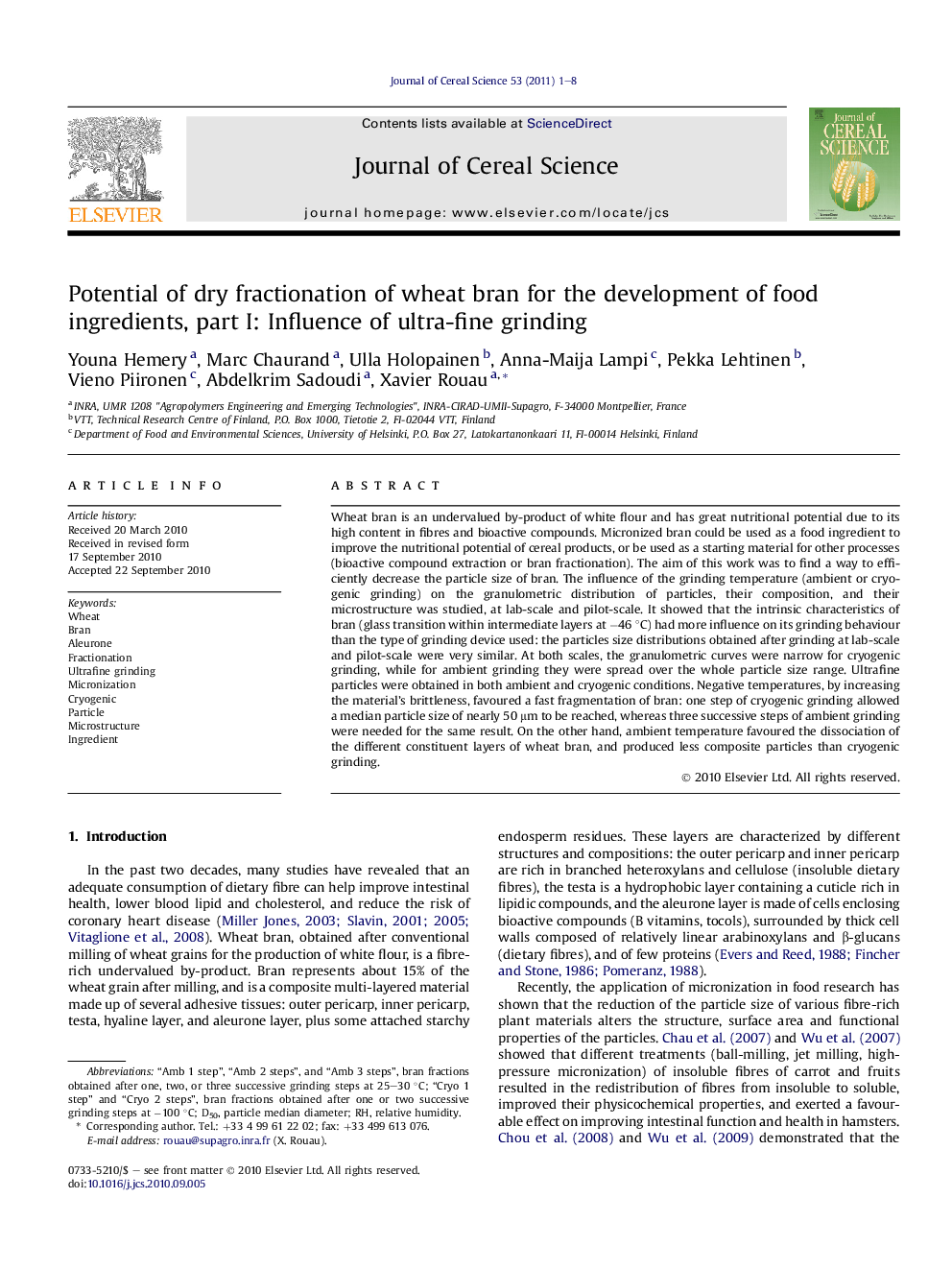| Article ID | Journal | Published Year | Pages | File Type |
|---|---|---|---|---|
| 6378172 | Journal of Cereal Science | 2011 | 8 Pages |
Abstract
Wheat bran is an undervalued by-product of white flour and has great nutritional potential due to its high content in fibres and bioactive compounds. Micronized bran could be used as a food ingredient to improve the nutritional potential of cereal products, or be used as a starting material for other processes (bioactive compound extraction or bran fractionation). The aim of this work was to find a way to efficiently decrease the particle size of bran. The influence of the grinding temperature (ambient or cryogenic grinding) on the granulometric distribution of particles, their composition, and their microstructure was studied, at lab-scale and pilot-scale. It showed that the intrinsic characteristics of bran (glass transition within intermediate layers at â46 °C) had more influence on its grinding behaviour than the type of grinding device used: the particles size distributions obtained after grinding at lab-scale and pilot-scale were very similar. At both scales, the granulometric curves were narrow for cryogenic grinding, while for ambient grinding they were spread over the whole particle size range. Ultrafine particles were obtained in both ambient and cryogenic conditions. Negative temperatures, by increasing the material's brittleness, favoured a fast fragmentation of bran: one step of cryogenic grinding allowed a median particle size of nearly 50 μm to be reached, whereas three successive steps of ambient grinding were needed for the same result. On the other hand, ambient temperature favoured the dissociation of the different constituent layers of wheat bran, and produced less composite particles than cryogenic grinding.
Keywords
Related Topics
Life Sciences
Agricultural and Biological Sciences
Agronomy and Crop Science
Authors
Youna Hemery, Marc Chaurand, Ulla Holopainen, Anna-Maija Lampi, Pekka Lehtinen, Vieno Piironen, Abdelkrim Sadoudi, Xavier Rouau,
